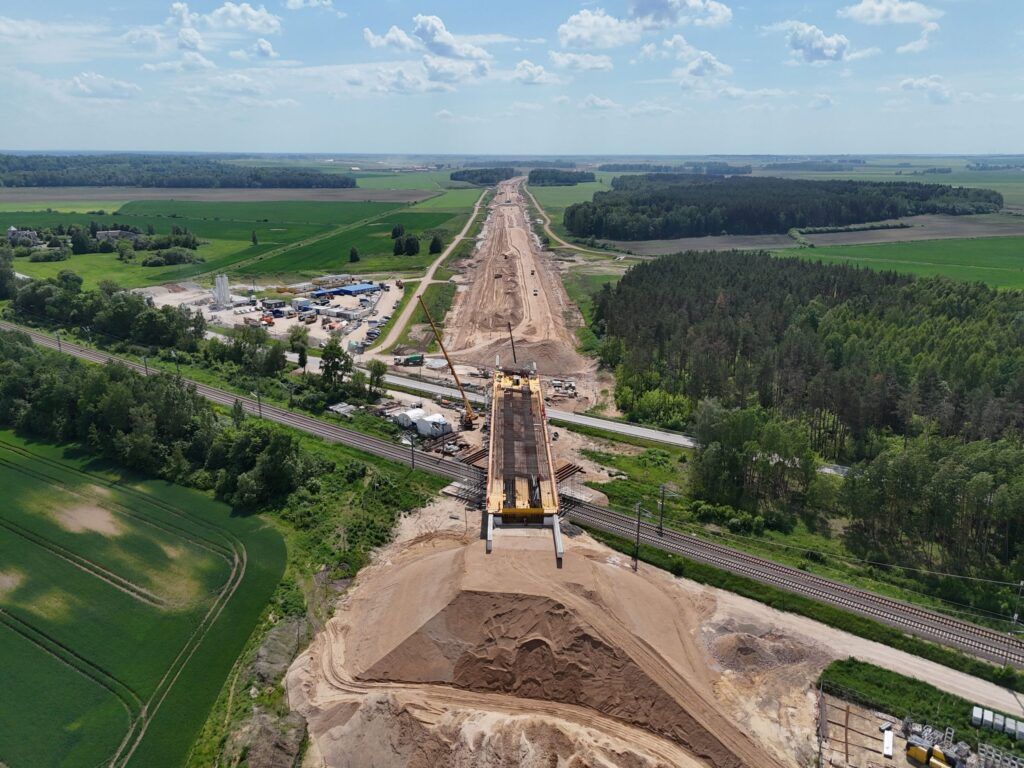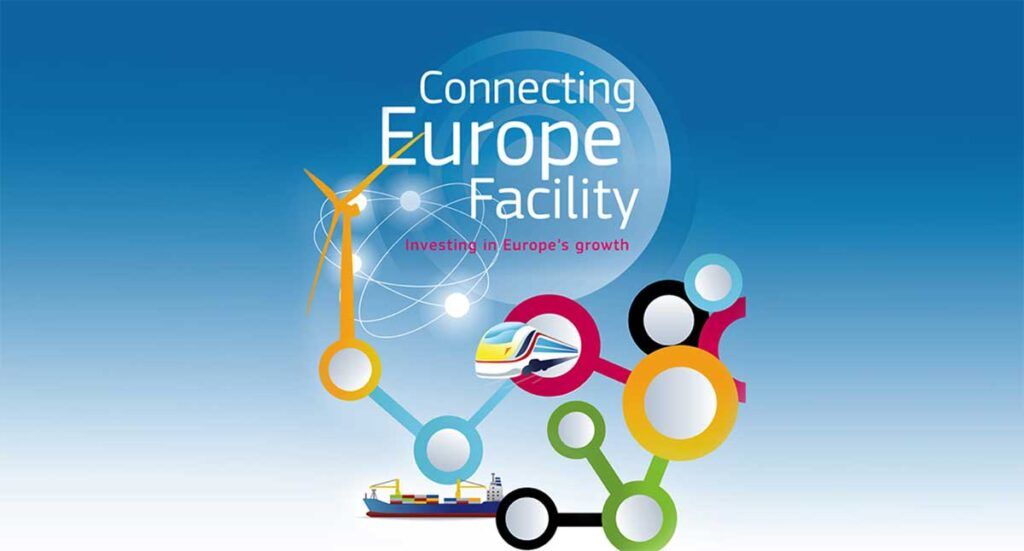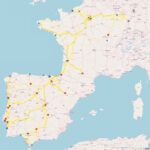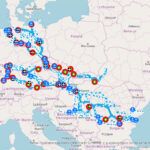
European investment in transport: the results of the CEF 2023 call for proposals
The European Commission has published the results of the Connecting Europe Facility (CEF) 2023 call for proposals. The European Union prioritizes, through the contribution of more than 7 billion euros, transport infrastructure projects with a pan-European scope. We review its objectives and the main investments at European level.

Carles Rúa is the Chief Innovation Officer at the Port de Barcelona and Director of the Master’s degree in Executive in Supply Chain Management at the UPC.

The European Commission has published this summer the results of the Connecting Europe Facility (CEF) 2023 call, almost coinciding with the entry into force of the new Regulation (EU) 2024/1679 on the Trans-European Transport Network (TEN-T Regulation).
Let's take a look at its objectives and the main investments at European level of this call.
What is the Connecting Europe Facility?
The Connecting Europe Facility is an EU funding instrument to promote growth, jobs and competitiveness through targeted infrastructure investments at European level. It supports the development of trans-European networks in the fields of transport, energy and digital services.
The CEF Transport (CEF-T) is the main financing instrument of the European transport policy. It implements the European Union's transport infrastructure policy by supporting investments in the construction or improvement of transport infrastructure throughout Europe. It focuses on:
- cross-border projects
- eliminating bottlenecks
- bridging missing links in the trans-European transport network (TEN-T).
- developing the nine pan-European corridors that make up the core network to be completed by 2030 and the comprehensive network (covering all European regions and to be completed by 2050)
- the horizontal priorities: the European Rail Traffic Management System (ERTMS) and the European Maritime Space (EMS)
The current CEF program is implemented within the current Multiannual Financial Framework 2021-2027 and has an allocated budget of €25,807 million for this period. It is provided in the form of grants that help co-finance projects (with a co-financing ratio that can range from 20% to 50% of eligible costs, depending on the type of project).
The grants are awarded on a competitive basis, with the projects selected being those that have obtained the highest score. The program is managed by CINEA (Climate, Infrastructure and Environment Executive Agency).

CEF-T 2023 results at the European level
The 2023 CEF (Connecting Europe Facility) call was published, opened on September 26, 2023 and closed on January 30, 2024. CINEA received 408 project proposals, requesting a total of €22.24 billion in co-financing, representing an oversubscription of more than three times the call budget.
The purpose of the call for proposals is to attract project proposals that will allow the completion and modernization of the TEN-T network's transport infrastructures, both the basic network and the global network, in the following areas:
- Railroads
- Inland waterways
- Sea and inland ports
- Roads and road safety
- Railway terminals
- Multimodal logistics platforms
- Multimodal passenger hubs
- Intelligent and interoperable applications for transport (including European rail traffic management system, intelligent road transport systems, Single European Sky, river information systems, European maritime single window environment, ship traffic monitoring information systems, electronic freight information, new technologies and data interoperability)
- Adaptation of transport infrastructure for the control of the Union's external borders.
- Freeways of the Sea
- Secure parking infrastructures
- Infrastructure resilience
In total, this call for proposals allocated 7,060,810.66 euros to the 134 European projects selected (32.8% of those submitted). Eighty percent of the investment went to rail projects, 8% to inland navigation, 5% to port projects, 4% to road, 2% to aviation and 1% to terminals.
The main investments at the European level are (projects of more than 250 M€):
- 1.41 billion for Rail Baltica through several projects in Poland, Estonia, Latvia and Lithuania. Rail Baltica is a rail infrastructure project that aims to link Finland, Estonia, Latvia and Lithuania to Poland with standard gauge (UIC) for both passengers and freight. It is one of Europe's priority infrastructure projects and corresponds to the eastern part of the TEN-T North Sea-Baltic corridor. If we add to this some €374 million of other railway actions in Germany and Poland, we can see that the North Sea-Baltic corridor is the one that has benefited the most in this 2023 call for CEF-Transport funds.
- 813 million for the construction of the first phase of the new Lisbon-Porto high-speed line. Infraestructuras de Portugal, IP, put out to tender last January the construction of the first 70 km of the line in the section between Oporto and Campanhã-Oiã.
- 764.5 M€ for the railway line between Lyon and Turin. The European aid includes 700 million euros for the tunnel and 64.5 million euros for the studies of the accesses to the French section. At 57.5 km long, the Monte d'Ambrin base tunnel that will cross the Alps between the Susa Valley in Italy and Maurienne in France will be the longest railway tunnel in the world, ahead of the Gotthard Tunnel in Switzerland, 57.1 km long, and the Seikan Tunnel in Japan, 53.8 km long.
- 527 million for various rail improvement projects in Greece (€187 million for the Pythion-Ormenio section; €192 million for the Acharnes-Oinoi section; €112 million for the Mouries-Strymonas-Promachonas section, on the border with Bulgaria; and €28 million for the deployment of the ECTS).
- 300 million for the connection of the Seine and Scheldt basins and, in addition, the Rhine and Maas basins and the creation of a cross-border waterway network of some 1,100 km.
- 290 million for works to improve the railway junction at Ceská Trebová, which is an urban node for passenger and freight rail transport in the Czech Republic.
- 290 million also for preparatory activities and works for the upgrading of Budapest's southern railway ring, specifically the Kelenfold-Ferencvaros section.
THE NINE RESULTING CORRIDORS OF THE TRANS-EUROPEAN TRANSPORT NETWORK TEN-T
FINANCING ALSO FOR MARITIME PORTS
The call has also benefited some 20 European seaports in Ireland, Spain, Finland, the Netherlands, Germany, Malta, Lithuania, Cyprus, Croatia, Greece and Poland that will receive support for the improvement of their infrastructure.
These improvements concern in particular the deployment of OPS (On-shore Power Supply) connections, which should enable the supply of electrical power to ships during their stay in port, allowing them to keep their diesel engines switched off while berthed. 109 million are dedicated to OPS in ports such as Aarhus (DK), Bremerhaven (DE), Gothenburg and Stockholm (SE), Rafina, Corfu, Kavala and Lavrion (EL), Limasol (CY), Gijón, Barcelona and Valencia (ES), La Velletta (MT), Kemi, Pori and Vuosaari (FI) and Muuga (EE).

Future CEF calls
The CEF program is implemented within the current Multiannual Financial Framework 2021-2027 and foresees the publication of a new call in autumn 2024 which, according to the spanish Ministry of Transport and Sustainable Mobility, will address the themes of Safe and Secure Mobility, Intelligent and Interoperable Mobility and also Sustainable and Multimodal Mobility.
The fact is that the CEF 2021-2027 program was endowed with 33,710 million euros, of which 25,807 million are for the transport sector. Of this, 21,681 million euros (83% of the total, at a rate of around 7,000 million euros per call) have already been allocated in the 2021, 2022 and 2023 calls. This means that for the next four calls (2024, 2025, 2026 and 2027) there will only be €4,126 million available, plus whatever is recovered (funds that are not spent) from the calls currently underway.
Taking into account that no new budgetary allocations are foreseen until the next Multiannual Financial Framework starting in 2028, the availability of CEF funds for the next four years will be reduced and, probably, the availability of funds for infrastructure will be very limited, being reserved to high priority projects by the EU or more “soft” projects (digitalization, etc). The eligibility of new countries such as Moldova or Ukraine further reduces the possibilities.












